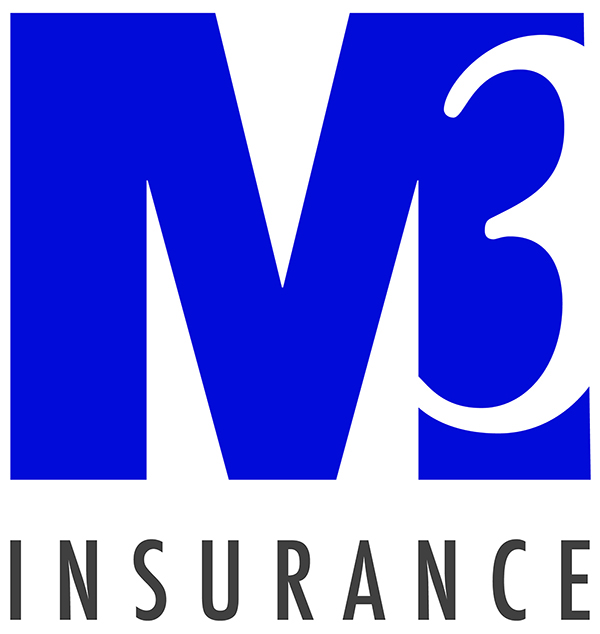Click here to view past issues
IN THIS ISSUE
- WHA in Washington, DC to Advocate for 340B, Prior Authorization Reform, and Year-End Health Care Extenders Package
- WHA Welcomes Molly Wiegel, New Senior Vice President of Finance, Chief Operating Officer
- CMS to Host Webinar on 2025 Hospital Price Transparency Requirements
- Hospitals Can Apply for No-Cost COVID Surplus Items from DHS
- Guest Column: Compliance FYI: 2025 ACA Affordability Update
- Fast Facts from the WHA Information Center: September is Ovarian Cancer Awareness Month
EDUCATION EVENTS
Aug. 8, 2025
WHA Financial WorkshopSep. 17, 2025
2025 Annual Wisconsin Organization of Nurse Leaders ConferenceJan. 28, 2026
2026 WHA Health Care Leadership AcademyClick here to view education event calendar
View more issues of The Valued Voice
Sign Up for WHA's Newsletter
Guest Column: Compliance FYI: 2025 ACA Affordability Update
By Karen Breitnauer and Alex O’Connor of M3 Insurance, WHA’s Premier Partner
 On Sept. 6, 2024, the Internal Revenue Service (IRS) issued Revenue Procedure 2024-35. In this document, the IRS increased the affordability calculation for large employers from 8.39% (2024) to 9.02% for 2025. This is an increase in the affordability percentage following several years of substantial decreases.
On Sept. 6, 2024, the Internal Revenue Service (IRS) issued Revenue Procedure 2024-35. In this document, the IRS increased the affordability calculation for large employers from 8.39% (2024) to 9.02% for 2025. This is an increase in the affordability percentage following several years of substantial decreases.
As a reminder, the Affordable Care Act (ACA) Shared Responsibility Provisions require large employers to offer health coverage to full-time employees that meet certain standards to avoid penalties:
- Offer minimum essential coverage to at least 95% of full-time employees; and
- Offer affordable and valuable coverage to all full-time employees
In order to manage to penalty #2, large employers must be mindful of the two requirements:
Valuable:
This requirement takes into account the cost sharing provisions and coverage under the plan. It does not include premium. The plan must cover 60% of the cost of benefits, or a “bronze” level plan. Employers can determine the value of their plans here.
Affordable:
This requirement applies to the lowest cost single coverage option that the large employer offers. Originally, the requirement was to compare premium contribution for such coverage to the employee’s household income. Because the household income is not “readily available” to the employer, three safe harbors were provided to determine affordability. In general, large employers avoid this penalty by offering full-time employees a contribution amount that is no more than 9.56% (2018); 9.86% (2019); 9.78% (2020); 9.83% (2021); 9.61% (2022); 9.12% (2023); 8.39% (2024); 9.02% (2025) of their wages toward the premium. To determine “wages,” the three affordability safe harbors are:
- Box 1, W2: Employers calculate affordability based on the wages paid to the employee multiplied by the current affordability percentage. Employers must use current year W2 wages (rather than from a prior year) which may be difficult to apply when making the offer of coverage at the beginning of the year rather than at the end when the W2 is generated.
- Rate of Pay: Employers calculate affordability based on the hourly rate x 130 or the employee’s monthly salary multiplied by the current affordability percentage. If a salaried employee’s monthly salary is reduced at any time during the year, this safe harbor cannot be used. The affordability calculation under this method is NOT altered by a leave of absence or reduction in hours worked. The employer can continue to use this safe harbor for hourly employees if the rate of pay is reduced during the coverage period, as long as the employer applies the safe harbor on a month-by-month basis. This method cannot be used for tipped employees or employees compensated based on commissions.
- Federal Poverty Level: Employers calculate affordability using the single federal poverty level for any given year multiplied by the current affordability percentage. Coverage is treated as affordable if the premium contribution required does not exceed 9.56 % (2018); 9.86% (2019); 9.78% (2020); 9.83% (2021); 9.61% (2022); 9.12% (2023); 8.39% (2024); 9.02% (2025) of the federal poverty level divided by 12. Employers are permitted to use the guidelines in effect six months prior to the beginning of the plan year to provide enough time to establish premium amounts in advance of open enrollment.
[2025 Calculation: $15,060 x 9.02% = $1,358.41/12 = $113.20/month]
These safe harbors are all optional. Employers can choose to use one or more of the safe harbors for all employees or any reasonable category of employees, provided it is done on a consistent basis. Reasonable categories include specified job categories, salaried vs. hourly, geographic location and other bona fide business criteria.
Key Takeaways:
Applicable Large Employers (ALEs) should take note that the affordability calculation will increase from 8.39% in 2024 to 9.02% in 2025. This is a substantial increase and will affect all offers of coverage for plan years that begin on or after Jan. 1, 2025. While evaluating affordability, ALEs should determine their acceptable level of risk while considering safe harbors for offers of health insurance for employees.
Guest Column: Compliance FYI: 2025 ACA Affordability Update
By Karen Breitnauer and Alex O’Connor of M3 Insurance, WHA’s Premier Partner
 On Sept. 6, 2024, the Internal Revenue Service (IRS) issued Revenue Procedure 2024-35. In this document, the IRS increased the affordability calculation for large employers from 8.39% (2024) to 9.02% for 2025. This is an increase in the affordability percentage following several years of substantial decreases.
On Sept. 6, 2024, the Internal Revenue Service (IRS) issued Revenue Procedure 2024-35. In this document, the IRS increased the affordability calculation for large employers from 8.39% (2024) to 9.02% for 2025. This is an increase in the affordability percentage following several years of substantial decreases.
As a reminder, the Affordable Care Act (ACA) Shared Responsibility Provisions require large employers to offer health coverage to full-time employees that meet certain standards to avoid penalties:
- Offer minimum essential coverage to at least 95% of full-time employees; and
- Offer affordable and valuable coverage to all full-time employees
In order to manage to penalty #2, large employers must be mindful of the two requirements:
Valuable:
This requirement takes into account the cost sharing provisions and coverage under the plan. It does not include premium. The plan must cover 60% of the cost of benefits, or a “bronze” level plan. Employers can determine the value of their plans here.
Affordable:
This requirement applies to the lowest cost single coverage option that the large employer offers. Originally, the requirement was to compare premium contribution for such coverage to the employee’s household income. Because the household income is not “readily available” to the employer, three safe harbors were provided to determine affordability. In general, large employers avoid this penalty by offering full-time employees a contribution amount that is no more than 9.56% (2018); 9.86% (2019); 9.78% (2020); 9.83% (2021); 9.61% (2022); 9.12% (2023); 8.39% (2024); 9.02% (2025) of their wages toward the premium. To determine “wages,” the three affordability safe harbors are:
- Box 1, W2: Employers calculate affordability based on the wages paid to the employee multiplied by the current affordability percentage. Employers must use current year W2 wages (rather than from a prior year) which may be difficult to apply when making the offer of coverage at the beginning of the year rather than at the end when the W2 is generated.
- Rate of Pay: Employers calculate affordability based on the hourly rate x 130 or the employee’s monthly salary multiplied by the current affordability percentage. If a salaried employee’s monthly salary is reduced at any time during the year, this safe harbor cannot be used. The affordability calculation under this method is NOT altered by a leave of absence or reduction in hours worked. The employer can continue to use this safe harbor for hourly employees if the rate of pay is reduced during the coverage period, as long as the employer applies the safe harbor on a month-by-month basis. This method cannot be used for tipped employees or employees compensated based on commissions.
- Federal Poverty Level: Employers calculate affordability using the single federal poverty level for any given year multiplied by the current affordability percentage. Coverage is treated as affordable if the premium contribution required does not exceed 9.56 % (2018); 9.86% (2019); 9.78% (2020); 9.83% (2021); 9.61% (2022); 9.12% (2023); 8.39% (2024); 9.02% (2025) of the federal poverty level divided by 12. Employers are permitted to use the guidelines in effect six months prior to the beginning of the plan year to provide enough time to establish premium amounts in advance of open enrollment.
[2025 Calculation: $15,060 x 9.02% = $1,358.41/12 = $113.20/month]
These safe harbors are all optional. Employers can choose to use one or more of the safe harbors for all employees or any reasonable category of employees, provided it is done on a consistent basis. Reasonable categories include specified job categories, salaried vs. hourly, geographic location and other bona fide business criteria.
Key Takeaways:
Applicable Large Employers (ALEs) should take note that the affordability calculation will increase from 8.39% in 2024 to 9.02% in 2025. This is a substantial increase and will affect all offers of coverage for plan years that begin on or after Jan. 1, 2025. While evaluating affordability, ALEs should determine their acceptable level of risk while considering safe harbors for offers of health insurance for employees.
IN THIS ISSUE
- WHA in Washington, DC to Advocate for 340B, Prior Authorization Reform, and Year-End Health Care Extenders Package
- WHA Welcomes Molly Wiegel, New Senior Vice President of Finance, Chief Operating Officer
- CMS to Host Webinar on 2025 Hospital Price Transparency Requirements
- Hospitals Can Apply for No-Cost COVID Surplus Items from DHS
- Guest Column: Compliance FYI: 2025 ACA Affordability Update
- Fast Facts from the WHA Information Center: September is Ovarian Cancer Awareness Month

